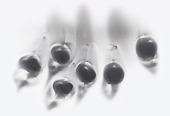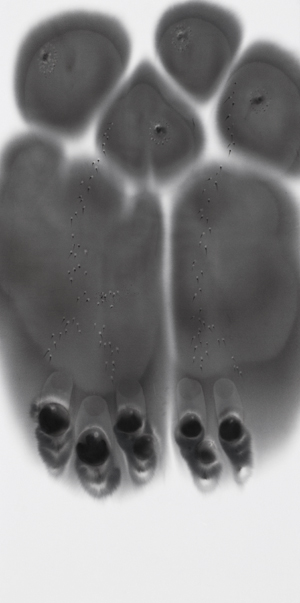|
Nature and Ink-and-wash painting embodied by the accumulation of time
Sangcheol Kim (Art Critic)
As one may know, ink-and-wash painting has a long history. Such historicity is the base of the tradition of oriental painting. Mature with long term development, it has rich formative experience, and has equipped unique formative system which system itself is form and content.
Kang Ho Saeng's works are dedicated to ink-and-wash painting. The spirit of ink-and-wash in the canvas demonstrates his direction clearly. It seems as if there is partial form, but strong expression of metaphysical resources is witnessed in ink-and-wash painting. It is beyond conceptual interpretation of formation or formative expression revealing strong desire to reach what is aimed and sought by ink-and-wash painting. Therefore, his work focuses on property of ink-and-wash itself rather than on detailed one, paying attention to the settlement of expression in formation.
The embodiment of such willingness is the property of water. In his work, water is not a passive medium of painting, but is itself aim content and actual. The canvas is filled with sensitive and meticulous observation and reaction on water. It catches physical change of water in permeating and spreading in terms of time change. His work itself is a time-accumulating one. Time creates rich, but accidental and non-formative traces by its own property. Though it has a random character, the artist converses it in his own formation through detailed observation and time management. It is not only simple formative function, but also a moment of catch by artist's view and selection. It is unique formation by harmonizing unique property of ink-and-wash painting, time as nature and artist as human.
Such method of formation is somewhat different to traditional expression and view of beauty. This might be the core of work to express own personality and to reflect contemporary as time and space by means of traditional resources as ink-and-wash. The canvas is vague and dimly. It is like a random collection of water just as chaos and disorder. His canvas attempting to construct order upon random chaos through water drop according to trace of water, has a character to expand on its own escaping from physical canvas. Detailed description of water drop is the minimal mean to converse random chaos into order. However, such form of water drop is expressed vague double structure creating change in fluctuation. Meticulous but double structured canvas converses nature as formation by adopting nature accumulated with water through optical illusion. Succession and development are always problematic in the use of strong traditional resources as ink-and-wash.
It might be two sides of the same coin. As to the artist, it is clear to explore new dimension by subject interpretation and personality rather than by observing traditional value and principle. Traditional papers like Hanji (traditional Korean paper) or Hwaseonji (rice paper) needs only one touch of expression. It seems not the most proper means to converse property which is changed in time span. Thus, the artist selects fabric with thick and even pattern and expressed aesthetics with free brush work. Such character of fabric creates feast of water all around the canvas and characterizes unique taste of fluid property. The interests in ink-and-wash, especially operation of water derive from physical interests. However, it does not remain in property as water itself. Various change and random phenomenon by water may be another feature of nature beyond a limited meaning of simple character of water.
The author might speculate old and essential relation between nature and human being through random of nature and harmony of order. Traditionality and property are adapted concept indicating ordinary approach of human toward nature. Unique expression by subject interpretation is a speculative report of human and nature in the contemporary society. An old saying that ink-and-wash painting begins from Pilbeob(writing), ripens with Mukbeob(ink) and completes with Subeob(水法, wash) implies such meaning of reflection. Considering that new does not mean a new resource or expression, but stresses visual and reflective contents, unique work of the artist deserves attention because his work takes a step forward from the sensitive boundary of tradition based on reflection of random nature and artificial formation of contemporary.
|
 |
 Hosaeng Kang Hosaeng Kang [Works Info Keyword]
[Works Info Keyword]
|


 Criticism
Criticism


